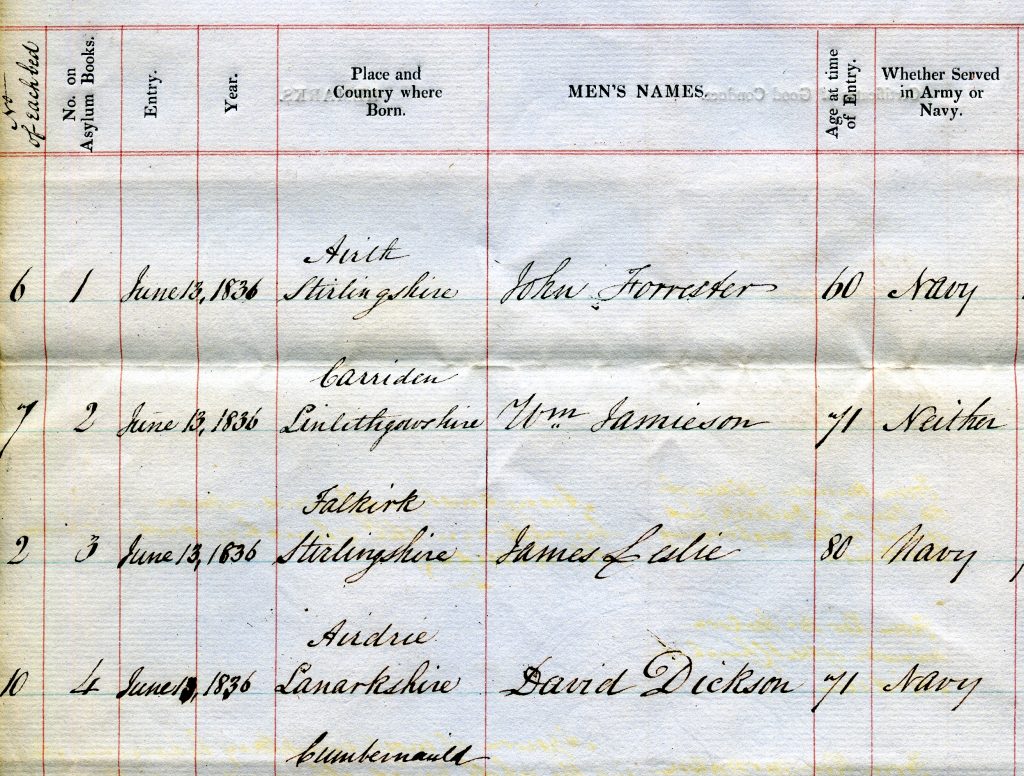In this blog post Andrej, our Putting Arts and Humanities to Work (ARTU9W4) placement student, writes about his experiences volunteering with our William Simpsons Asylum project.
The William Simpson Asylum (WSA) project aims to recover, restore, and catalogue the collection of documents found in 2014 during renovations in the building. I was able to participate on cataloguing the findings and will share my experience.
The William Simpson Asylum opened in 1836 and functioned as a residential home for elderly former soldiers and sailors, most of whom stayed there until they died. I was positively surprised to see how much information we already had on the places and people around the Asylum (especially with regards to the Francis Simpson – the asylum founder). You can find a wealth of information just by a quick google search or to find more on the project, you can visit the archives.
I managed to participate on the project through a work placement module at the University of Stirling. As a history student I wanted to get to ‘field work’ as soon as possible and so the opportunity to work in archives as part of my studies sounded perfect. I was assigned to work with the University Archivist as a mentor and soon after the semester started, we had our first meeting where he explained to me what I was to do. Most of the work required me to catalogue the documents which consisted of transcribing old writings from the middle of the 19th century into a digital format. It was very tedious and sometimes even investigative work. My first task was to transcribe metadata from the patients, including their occupation and where they lived and died.
After the first experience with deciphering this ‘ancient calligraphy’ I moved to Annual House Reports. Each year these reports were written by a housemaster, intended for the ‘Trustees’. It concluded the expenses, changes and some events that happened in the Asylum. This was perhaps the most interesting part, because I managed to learn a lot about the life of the inmates, their regularities and how the house was run. The housemaster even described the habits of the individuals, for example he included that a patient named Thomas Allan enjoyed working in the garden so much so that he spent on average three times longer there than the other patients. Even from the expenses listed in the report one could imagine how a normal day might go. For example, bread was always given for dinner, beer only for those who worked outdoors that day, but potatoes were completely unavailable from May till July, perhaps due to the potato blight at the time or simply because of bad harvest in the previous year.
“Thomas Allan still takes as much interest in cultivating potatoes and vegetables as if the benefit were personal.”
From the Governor’s Report to the Trustees of William Simpson’s Asylum, November 1859.
The purpose of digitizing this collection was to make the information more accessible and perhaps also for genealogical purposes by helping those looking for their ancestors or their burial sites. From my time volunteering I learned how documents are ordered, how to filter necessary information, but mainly how to read old handwriting. Hours of looking at one word from different angles is definitely engraved into my memory but it was surely worth it.
Andrej Durian
